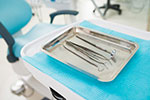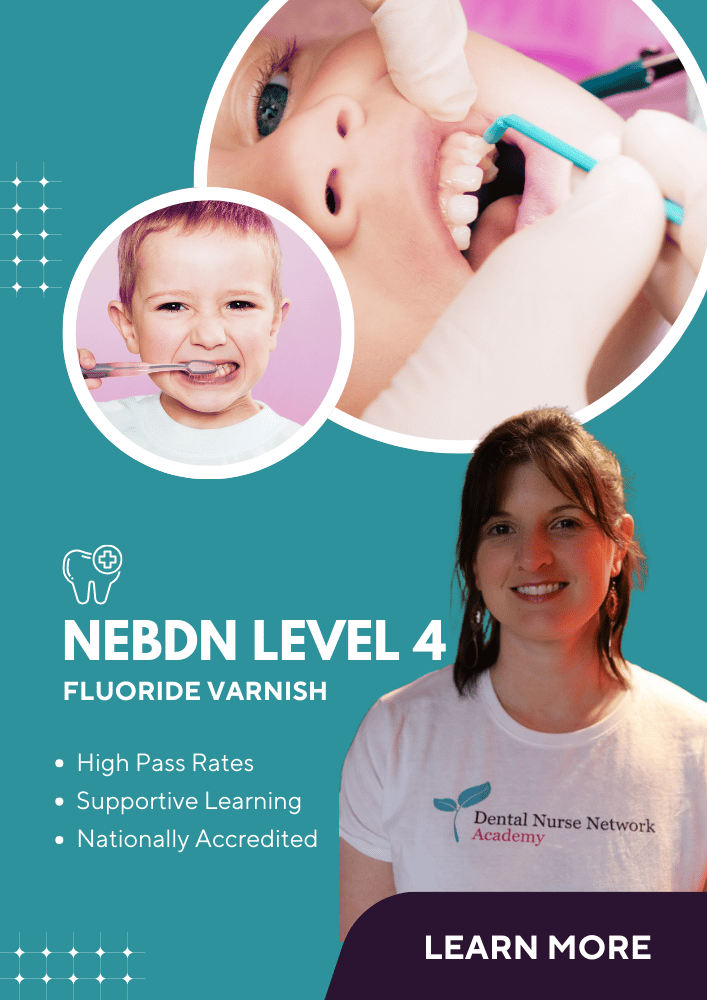 At our practice, we are very lucky to have a large surgery that we use for any treatment involving implants. There is plenty of storage for all the necessary instruments, and more than enough room for the Implantologist, two nurses and the patient.
At our practice, we are very lucky to have a large surgery that we use for any treatment involving implants. There is plenty of storage for all the necessary instruments, and more than enough room for the Implantologist, two nurses and the patient.
When preparing the surgery for a placement procedure, all the surfaces will be thoroughly wiped down with a disinfectant spray including the patient chair. The second implant nurse and I will usually take it in turns regarding which nursing role we will take on for each placement. One of us will be the ‘sterile’ nurse and the other will be the ’un-sterile’ nurse. As part of the preparation we will retrieve an ‘implant pack’ from storage; this will have everything we need to set up the room.
The sterile nurse will put on sterile gloves and will be able to set up the room, ready for the placement and will drape the room with sterile drapes. We will have two drapes that will cover two areas of the work surface; on these drapes will be the Implantologist’s instruments. The un-sterile nurse will be able to help the sterile nurse by pulling open the sterilisation pack; the sterile nurse will then remove whatever is in the pack and place it on to the sterile drape. If the sterile gloves come into contact with anything that is not sterilised, then the gloves will need to be removed and a new pair put on.
The trickiest part of setting up the room is covering the suction with the sterile ‘tubing’. We have now discovered an easier way to do this, but it does take some practice. The un-sterile nurse will spray the relevant suction tube with a bleach based spray and lift it off the unit making sure that the suction is not active at the time. The sterile nurse will open the end of the tubing and place it over the top of the suction tube, enabling the sterile nurse to pull the sterile tubing up on to the suction tube. At the same time, the non-sterile nurse can support the suction tube, whilst pulling the sterile tubing down using the non-sterile tabs available.
The instruments needed for the procedure are laid out in the order in which they should be used. The handles on the chair light will also be covered with sterile drapes. The sterile nurse can do this whilst the un-sterile nurse prepares the pre-op medication, the computer notes and any other relevant material such as scans or x-rays.
When the patient is brought into the room, they will be warned to not touch any of the blue (sterile) areas. Once they are sitting in the patient chair, the Implantologist will ensure that they are happy with the treatment plan, and ask if they have any questions before the procedure begins. If the patient is wearing dentures, then they will be asked to remove them. All patients will use a chlorhexidine mouth rinse for 1 minute to reduce oral bacteria in the mouth. One of the nurses will time the minute and inform the patient when this time is up.
The Implantologist and the sterile nurse will then put on their hats and visors. The Implantologist will also wear a head light, and then will start ‘scrubbing in’ for the procedure using a scrub brush that includes a chlorhexidine gluconate solution. The brush should be used on the fingers, hands, wrists and arms up to the elbow; the solution is then rinsed off under water. The Implantologist will then open the second part of the sterile implant pack and pass a hair cover to a nurse. The nurse will cover the patient’s hair with this hat, ensuring that all hair is covered. The Implantologist’s hands and arms are dried using sterile towels; only then can the sterile gown be picked up. A nurse will be ready to help the Implantologist ‘gown up’ by holding on to the non-sterile tabs and pulling the gown into place. It is then closed using Velcro and a tie around the waist. Sterile gloves will be waiting in the sterile pack on one of the drapes. The Implantologist will put on the gloves, and then pick up the patient’s drape.
We explain to the patient the importance of keeping their hands under the drape at all times, even if they have an itchy nose. They are asked to let us know if this happens so we can sort it out. The patient will then be covered with the sterile patient drape. The sterile nurse can then copy the scrubbing in and gowning up process. Once the sterile nurse and the Implantologist are gowned up, the un-sterile nurse collects up the now empty sterile pack and the towels used to be disposed of in clinical waste.
When I first started to implant nurse, the idea of setting up the room was daunting. It’s hard to remember what cannot be touched and what can be. I’ve been assisting with implants now for approximately 3 years and it is now second nature to me. Practice makes perfect!



